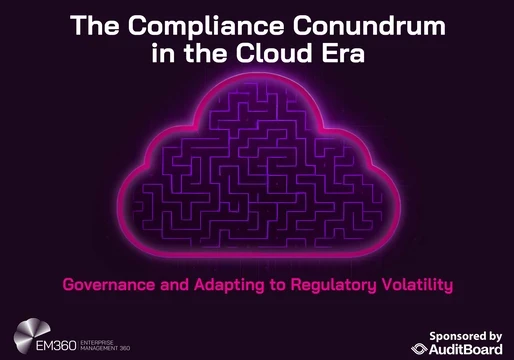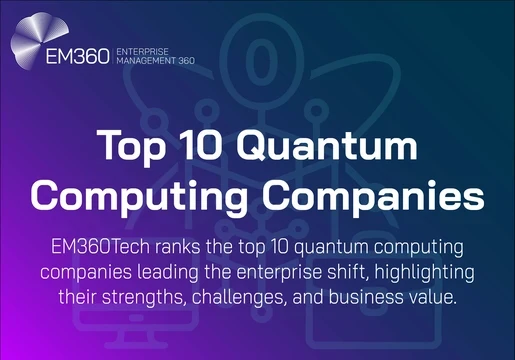By Geoff Hixon, Lakeside Software

Enterprise digital transformation efforts are more likely to struggle due to gaps in organisational skills than they would from technological limits, especially nowadays. Take, for example, if a sales team reports that their email automation platform has been sending duplicate messages to customers, and potential new clients. After further investigation, it may be discovered that several other departments, such as marketing, have been experiencing similar integration failures with their own core business data systems at the very same time. These system issues impact not only customer experience but also operational efficiency.
In March 2024, research of UK public sector organisations studying customer experience found that 65% of organisations delivering digital transformation projects lacked an overarching data strategy, 87% hadn't trained employees on new technologies or processes, and 79% hadn't gained employee buy-in on their transformation plans. The research revealed that transformation strategies were being driven more by available technology than actual organisational needs, with significant gaps in key implementation skills.
This situation explains why 75% of organisations without structured Digital Employee Experience (DEX) strategies fail to solve operational challenges, according to Gartner research. For enterprise leaders, DEX is an essential business factor that directly impacts workforce productivity, talent retention, and competitiveness.
The business case for DEX
Investment in the digital workplace is crucial as friction leads to significant costs for enterprises. Research indicates that poor digital experiences contribute to 50% of employees choosing to quit their jobs. Workers often say they operate at only 60% of their potential productivity due to tech limitations. For large enterprises, this situation results in a major revenue loss due to reduced efficiency, higher recruitment costs, and a weaker competitive edge.
Enterprise IT organisations also face growing pressures, including overwhelmed service desks, complex operating system migration projects, hardware lifecycle management issues, and software license management needs. Traditional IT metrics, like device uptime, ticket resolution times, and system availability, provide some operational insights but don’t always offer a complete view of the employee experience that drives business results. In fact, a 2022 study by Lakeside Software found that up to 40% of IT issues go unreported, meaning that many problems never make it into help desk systems or performance dashboards — reinforcing the limits of traditional metrics for understanding the full scope of end-user challenges.
How to build a strategic framework for enterprise DEX excellence
Establish DEX as a Strategic Business Priority: Enterprise DEX efforts require C-suite support and cross-functional governance. Instead of viewing DEX as an IT issue, successful businesses treat it as a capability that helps deliver broader organisational goals like talent acquisition, productivity improvement, and digital transformation.
Implement dedicated DEX governance: The rise of Chief Workplace Experience Officers shows that organisations understand the strategic importance of DEX. Companies should establish clear accountability through dedicated DEX leadership or cross-functional teams with specific responsibilities. Effective DEX governance requires senior leaders skilled in change management, the ability to collaborate across departments, with the authority to implement organisation-wide initiatives, and direct reporting links to executive leadership. These governance structures ensure that DEX initiatives have the influence and resources needed to drive meaningful change across the entire organisation, from the ground up.
Develop comprehensive DEX measurement systems: All enterprise DEX programmes require analytics that go beyond traditional IT metrics. Businesses need to ensure they create measurement frameworks that capture quantitative performance indicators and qualitative employee feedback, as both are fundamental to success. By measuring key business impact metrics like employee engagement, voluntary turnover, and productivity indicators, alongside operational performance measures such as service desk resolution times, system performance data, and incident occurrences, businesses can use that data to identify "silent sufferers”. These are the employees who don’t report issues or try to resolve them on their own, and these “silent sufferers” represent around 40% of the workforce.
How to get employee support for organisational changes
To avoid employee fatigue of changes to their working lives, likely due to the impacts of remote work, return-to-office mandates, and AI technology rollouts, enterprise DEX initiatives must address the complexities of managing change and their employees’ capability limitations.
Successful change management strategies include clear communication plans with advance notice of changes, extensive training programs, particularly during onboarding, identifying and training change ambassadors throughout the organisation to support employees and teams, and recognising that lasting change comes from employee engagement. Avoid just giving directives from leadership. Instead, be aware that any potential change fatigue may feel like another burden to your employees.
The best DEX changes are those that have zero impact on the users. Users just expect technology to work, and if DEX improvements are made correctly, users will simply feel a better experience and not be impacted by the change. In making DEX improvements feel supportive, those employees will be more likely to get on board with the changes being made to help improve their productivity and engagement.
Technology alone isn’t the answer
While AI-driven solutions like chatbots and self-healing systems can enhance productivity, technology alone won’t resolve DEX challenges. Every enterprise should balance tech capabilities with the skills needed to manage organisational change., including shifting from reactive IT support to proactive improvement of employee experience. Investing effort and time into continuous improvement processes means using feedback tools to determine how employees are working with AI and other new technologies.
However, surveys are often intrusive, skipped, or filled out inconsistently — and can be skewed by a user’s mood at the time. In contrast, accurate data collection and behavioral metrics provide a clearer view into how users interact with technology. This kind of visibility is invaluable, especially as users continuously evolve in response to DEX improvements. Understanding that evolution is key for IT to maintain a proactive support mode, and tech advancements like AI can help keep the approach relevant and effective over time.
An implementation roadmap for enterprise leaders
Successful enterprise DEX transformation requires a sustained systematic approach, which starts with an assessment phase to set your organisation’s baseline metrics for technology performance and employee satisfaction. For the plan to develop strategically, enterprises must align their DEX goals with broader business-wide objectives. Only then will executive support be gained. Governance implementation is a must-have, particularly when implementing dedicated leadership and cross-functional coordination structures for rollout.
Technology integration involves deploying measurement and monitoring platforms that provide actionable insights into employee experience at each stage, ensuring any resistance or burden is overcome quickly. Change management is only truly successful when it works alongside organisational change initiatives with the right support structures already in place. Continuous review and monitoring, for speedy assessment and adjustments to be made when needed, is also key to maintaining and optimising the technology and working practices. Keeping an eye on what is happening during tech rollouts, using all available data, will only help your DEX programme evolve to fill any gaps in your business’s organisational needs and reduce the time taken to move from the current state to a more competitive business future.
Return on investment and business impact
Any lack of data strategy, inadequate employee training, and poor change management can undermine digital transformation efforts regardless of the technical capabilities of the systems being implemented. Enterprises with DEX programmes achieve measurable business value via higher employee productivity, lower turnover costs, improved talent acquisition, and stronger competitive positioning.
For enterprise leaders, DEX is not just an IT project; it is the heart of IT. Everything IT does needs to have DEX in mind. It is a key business capability that impacts organisational performance, employee satisfaction, and strategic competitiveness. Achieving success means treating DEX as an ongoing strategic discipline rather than merely a technology deployment. By transforming technology from a source of friction into a tool for employee productivity, enterprises can ensure themselves a competitive advantage in an ever-evolving, increasingly digital business landscape globally.







Comments ( 0 )